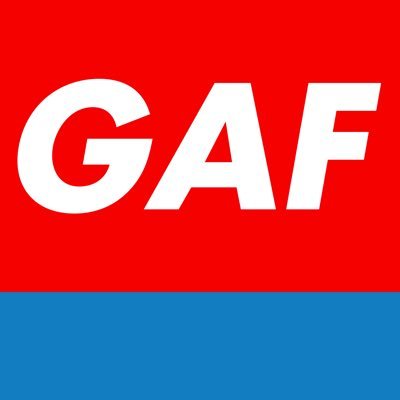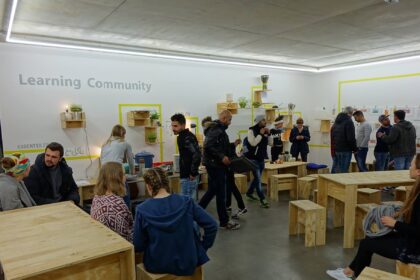Political Economy, Culture Policy and the Fascist Horizon: the State of Art and Politics in Sweden
Fredrik Svensk
The political economy has changed, the culture policy has not. After two four-year terms with a center-right regime and its drastic tax cuts and privatization policy, Sweden is presently governed by a minority government consisting of the Social Democrats and the Green Party. What is most striking about the cultural policy is how little it has changed during the general right wing turn of the last decade.[1] Cultural policy has in this sense held an almost “post-political” or “autonomous” status, for a much longer period than other aspects of policy. However, a crucial ideological shift occurred in 2009 when the bourgeois government decided to remove the guideline that cultural policy should “counteract the negative impacts of commercialism.” [2] Added in 1974, this guideline is perhaps the foremost example in Swedish contemporary history of art’s function within what was once called the mixed economy, which in practice meant that the state redistributed economic resources both to people’s aesthetic education and to an elite bourgeois culture addressed to everyone.[3]
Still, cultural policy has increasingly become what is called “aspect policy,“ i.e. integrated into other areas of politics. The culture policy that supported a more autonomous notion of artistic quality made art instrumental in governance at large by making art reproduce the ideology of liberal autonomous subjectivity. The present tendency is to connect art to specific problems in society, and to integrate art into other areas of policy. This has changed the conditions and function of critical artistic practices seeking to investigate and challenge local and global power relations. On the one hand this is a way to avoid limiting art to the art world bubble, on the other it challenges the historical function – both progressive and conservative – of public art institutions.[4] Under the common name Klister, important small and mid-sized institutions like Signal in Malmö and Tensta konsthall began to collaborate as a network in 2011, seeking to convey and communicate their social function.[5] These united efforts offer another sign that art has become something to lobby for, rather than something essential for society as such. While Swedish governance has been influenced by corporate models for decades it is now known as New Public Management.
This model intensified during the 1990s through a largescale corporatization and privatization of the public sector that has normalized art as an entrepreneurial project-based activity committed to certain specific political objectives. This neoliberal development is paradoxically not at all against art projects that are themselves opposed to neoliberalism, as long as they are a part of the political objectives. Today, Sweden has a cultural minister from the Green Party, Alice Bah Kuhnke, who is active on social media and publically positions herself with regard to questions of race, class and gender in different areas of culture. Along with the aspect policy, this has actualized debates about the principle of maintaining an arm’s length between politics and culture, not least due to the risks that might come with a possible regime change of nationalist character. At the same time as leading social democrats now are questioning the right to strike, in the name of the “Swedish model,” the Swedish Democrats, a right wing populist party with Nazi roots, is the second largest party.[6] What is more, the Swedish Democrats is the only party with a radically different cultural policy than previously seen in the country.[7] What follows is a small selection of events and phenomena that – in light of this fascist threat – represent the challenges facing critical art and activism in Sweden today.

Public Art Agency Sweden and institutionalized critique of the capital-labor relation
National cultural policy is reflected through the new direction of the Public Art Agency Sweden, one of the country’s most important institutions of public art. Among other things, the new focus has made possible provisional projects influenced not least by Creative Time inc. An example is the way that cultural organizations in certain exposed suburbs have made art serve a politics of integration and housing, or of urban development. Eternal Employment by the Swedish artist duo Goldin+Senneby is a notable state-supported project of this type that was selected by Public Art Agency Sweden. It formally plays on the relation between the temporary and the permanent. The duo’s proposal is to employ a person who will work under the same conditions as all public employees, yet without specific tasks. Insofar as this work represents capitalism today, it also represents a public artwork that comments on the major political shift in Sweden – a shift that is less felt in the cultural policy that makes possible funding for this work of art.[8]
Self-decolonization of Swedish public culture
Ortens konstfestival took place in the freeport of Gothenburg in 2016 and 2017.[9] The aim of Ortens konstfestival is to promote and celebrate the culture that exists in the suburbs. They do this, they write, by “building a platform where we create and present art that our brothers and sisters can relate to. The festival is the beginning of a movement to define art with respect to ourselves and let our creativity get the space and recognition it deserves.” The festival was initiated by, among others, the Pantrarna – för upprustning av förorten, one of several initiatives that, on the one hand, is on par with national cultural policy, and on the other, refuses the dominant art world.[10] Radical political manifestations of art such as these, as well as large sections of the militant trans movement, receive public funding without seeking recognition according to art-world hierarchies. They have managed to employ the shift in cultural policy toward aspect politics strategically as a means of producing critique. An opposite movement occurs within the rural art scene that organizes through networks and, rather than refusing the contemporary art game, eschews the city in order to stage the discussions of contemporary art from rural perspectives. While Sami calls for a decolonization of Sweden are getting louder, and Sami culture is explicitly supported through national cultural policy, the Sami people are still denied judicial recognition in accordance with the UN’s Indigenous and Tribal Peoples Convention ILO:169.[11] This is not to say that Sami art, as supported by the Swedish culture policies, is by definition reproducing a structural racism, or functioning as part of a neocolonial state apparatus. Yet the problem pinpoints the situation facing state-funded critical art in relation to political changes in the rest of society and how it is governmentally supported.

Photo from: Draken film
The anxiety of extremism
There are many examples of how the worldview of the Swedish Democrats affects center politics. In the spring of 2018, reacting to a critical editorial in the conservative newspaper Göteborg-Posten, leading city councilman of Gothenburg and head of the municipal board, Ann-Sofie Hermansson, intervened to stop the screening of Hanna Högstedt’s Burka Songs 2.0 and a subsequent panel discussion. When another institution, Göteborgs litteraturhus, decided to screen the film, Hermansson pledged to review their funding and stated that hosting the event was in violation of the city’s values.[12] This example shows how a social democratic party in government has adjusted to the nationalist agenda, and shifted its focus to immigration, rather than redistributing wealth for the common good. It also shows how a cultural event can be viewed as part of the Swedish integration policy one day, and be rejected as extremism the next. In 2011, Konsthall C in Stockholm, with the support of The Swedish Art Grants Committee, hosted Palestinian freedom activist and flight hijacker Leila Khaled without garnering any similar reactions. The 2018 case of Burka Songs 2.0 in Gothenburg highlights a swift development of the zeitgeist toward our present as marked by Trump, Brexit and right-wing populism throughout Europe.

Public service, feminism, copyleft and alt-right
In a development similar to what we have seen in the United States, the image of public service has changed and different political interests have begun viewing it and other mainstream media as instrumental to their agenda. This direction has been pushed by the right – and has been crucial to the struggle of the extreme right – but it has also affected the relation of the Swedish #metoo-movement to mass media. The artists’ #metoo, gathered under #konstnärligfrihet (artistic freedom), has been successful in exposing sexism at Swedish art institutions, which has led to several concrete proposals for changing education.[13] Social media was decisive for this mobilization, while the right has generally been better at mobilizing online. The left’s use of social media as a tool for propaganda is less advanced and has failed to match, for example, the efficiency of the Nordic alt-right. Additionally, the relatively strong Copyleft movement for net politics and hacktivism, with ties to The Pirate Bay, has receded.[14] Meanwhile, legislation has consistently reflected capital interests. A recent proposal commissioned by the government suggested greater penalties for copyright infringements. As has been the case with the more restrictive migration laws, the tightening juridical grip happens with reference to public opinion or, as in the case with copyright laws, to artists’ right to their work.

Anti-fascists unite
In the fall of 2015 when a large number of immigrants came to Sweden, an impressive organization of activists and public opinion was created in support of the migrants, although the situation changed quickly both legally and as a matter of public opinion. Several networks around the organization No One is Illegal (Ingen människa är illegal) has continued to assist with housing and other aspects of arriving in Sweden.[15] Meanwhile the normalized image of public opinion, as presented foremost by the Sweden Democrats, has been used to justify the stricter legislation encountering immigrants and a more restrictive immigration policy in general. In spite of the widespread right wing turn of Swedish society, a slumbering anti-fascist movement successfully mobilized to stop a large Nazi demonstration in Gothenburg. 100,000 anti-fascists stopped the Nazi organization NMR (The Nordic Resistance Movement), which had received a demonstration permit during a big book fair, from carrying out the action. The network Anti-Fascist Front Gothenburg that initiated the mobilization showed that popular anti-fascism in Sweden is far from over. This may become crucial. As the right wing rises in Sweden, comparisons with other European countries are made more frequently. Several lawyers have pointed out the possibility for a populist party with a parliamentary majority to abolish democratic and human rights from the constitution, as has happened in Poland.[16] At the time of publication of this text there is a great risk that the situation for art and political activism will be changing radically. It will not happen without resistance.
Fredrik Svensk is a critic, educator and editor. He holds a Lecture position in Art Theory at Valand Academy, University of Gothenburg, and is the editor-in-chief with Sinziana Ravini of Paletten Art Journal. In 2017 he co-curated national Pavilion of Bosnien & Herzegovina, at the Venice biennale. His current research project is on art criticism & biopolitics and he writes criticism for Aftonbladet Kultur, Kunstkritikk and Artforum International.
Endnotes
[1] With new elections on 9 September 2018trade union struggle is questioned more and more and Sweden has seen an unprecedented increase of private actors in the welfare sector. Although health care, elderly care and education is still publicly funded, these services are delivered by for profit companies to a much greater extent. (Stefan Svallfors & Anna Tyllström Lobbying for Profits: Private, Companies and the Privatization of the Welfare State in Sweden, Working Paper 2017:1 Institute for Futures Studies, https://www.iffs.se/media/22171/2017_1.pdf (June 30, 2018); Jenny Andersson, A Model of Welfare Capitalism?: Perspectives on the Swedish Model, Then and Now.
[2] In an interview with the Minister of culture in 2014, she considered reclaiming this goal. https://www.svt.se/kultur/intervju-med-alice-bah-kunhke (June 30, 2018).
[3] According to the new guidelines from 2009 the culture policy should still support an autonomous notion of artistic quality yet, at the same time, “cultural competence and creativity” should promote social, environmental and industrial development.
[4] The advance of academic artistic research in higher art education can be regarded as part of this development in which art becomes an aspect-policy subjected to scientific concepts of knowledge as well as qualification systems, and thus becoming more internal to the university system and, only secondary, oriented towards public institutions.
[5] A recent report showed that these art institutions constitute takeoff and landing strips between local and global phenomena, but also between different epochs. They are included in—and contribute to—comprehensive, overlapping ecosystems, such as the art world, local communities, education, public life and research. The report claimed that “they are overlooked, underused and somewhat blemished by their brusque treatment by the media and our fast-growing public.” Mikael Löfgren, Inga undantag. Värdeskapandet i små och medelstora samtidskonsthallar, Tensta konsthall, 2014 http://www.tenstakonsthall.se/uploads/130-Inga_undantag_.pdf
[6]According to the most recent polls: https://www.svt.se/nyheter/inrikes/sd-fortsatt-nast-storst-i-svt-novus (June 30, 2018)
[7]Introduction to the culture politics of Sverigedemokraterna https://sd.se/var-politik/kulturpolitik/(June 30, 2018). Book about Nazi roots of the party: Johan Ulvenlöv, Matti Palm and Anders LarssonUtan ånger – Gustaf Ekström, SS-veteranen som grundade Sverigedemokraterna (Vaktel förlag, 2017)
[8] According to the proposal “The position holds no duties or responsibilities, other than that it should be carried out at Korsvägen. Whatever the employee chooses to do constitutes the work. The employment contract is full-time and of indefinite duration. Should the employee resign or retire, a new employee is recruited. Employment conditions correspond to that of an average public sector employee; including working hours, holiday entitlement, pension provision, notice period, etc. Annual wage increases aim to follow collective bargaining agreements. The endless duration of this employment is feasible because money pays better than work. As long as we live in a society where the return on capital is substantially higher than the average increase in wages, Eternal Employment is kept afloat.” More info about the project see https://statenskonstrad.se/konst/vastlanken-kronotopia/eternal-employment/ (June 30, 2018)
[9] “Orten” is short for suburb, “för-ort”. The word removes the prefix “för-” (pre-) as referring to something marginal in relation to the city. “Orten” places the suburban in the urban center with significant implications for art and culture. More info at: http://konstframjandet.se/projekt/speak-your-mind/ortens-konstfestival-2016/ (June 30, 2018)
[10]Pantrarna – för upprustning av förorten(The Panthers – for the rehabilitation and/or arming of the suburb). In this context it is worth mentioning Clandestino Institute and Festival, which focuses on both music and decolonial research and education.More info at: http://clandestinoinstitut.org/ (June 30, 2018)
[11] See :https://www.youtube.com/channel/UC3ztgfLJxUaB0D_Z7T6V72w (June 30, 2018).
[12] More info about the case at: https://www.svt.se/nyheter/lokalt/vast/filmregissoren-beklagar-att-goteborgs-stad-bojer-sig-for-kritik (June 30, 2018)
[13]. Se for example Anna Linder Vems revolution blir #metoo?in Paletten Art Journal https://paletten.net/journal/2017/02/02/vems-revolution (June 30, 2018)
[14] In part this has to do with the new business model represented by Spotify, as a response to a more radical possibility for copying and sharing presented by digitization and the Internet. More about the lost Internet struggle: Rasmus Fleischer Vad var Piratbyrån?in his blog copyriot, 29/06/10
https://copyriot.se/2010/06/29/vad-var-piratbyran/ (June 30, 2018)
[15] More info at: https://www.ingenillegal.org/ (June 30, 2018)
[16] Staffan Myrbäck Det är enkelt att avskaffa demokratin i Sverigehttps://tidningenfolkhogskolan.se/det-ar-enkelt-att-avskaffa-demokratin-i-sverige/ (June 30, 2018)










